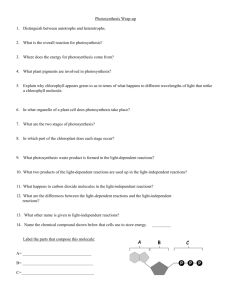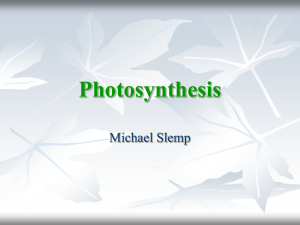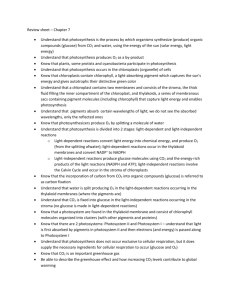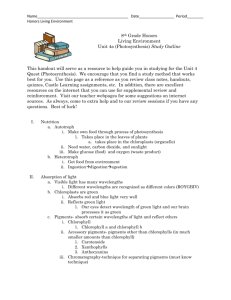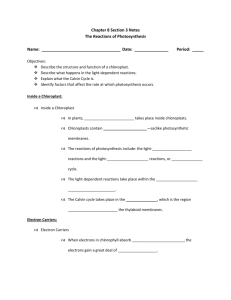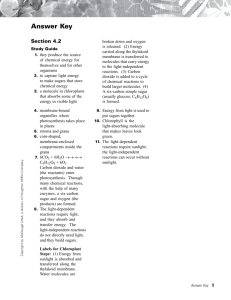Click here for Section 4.2 Study Guide
advertisement
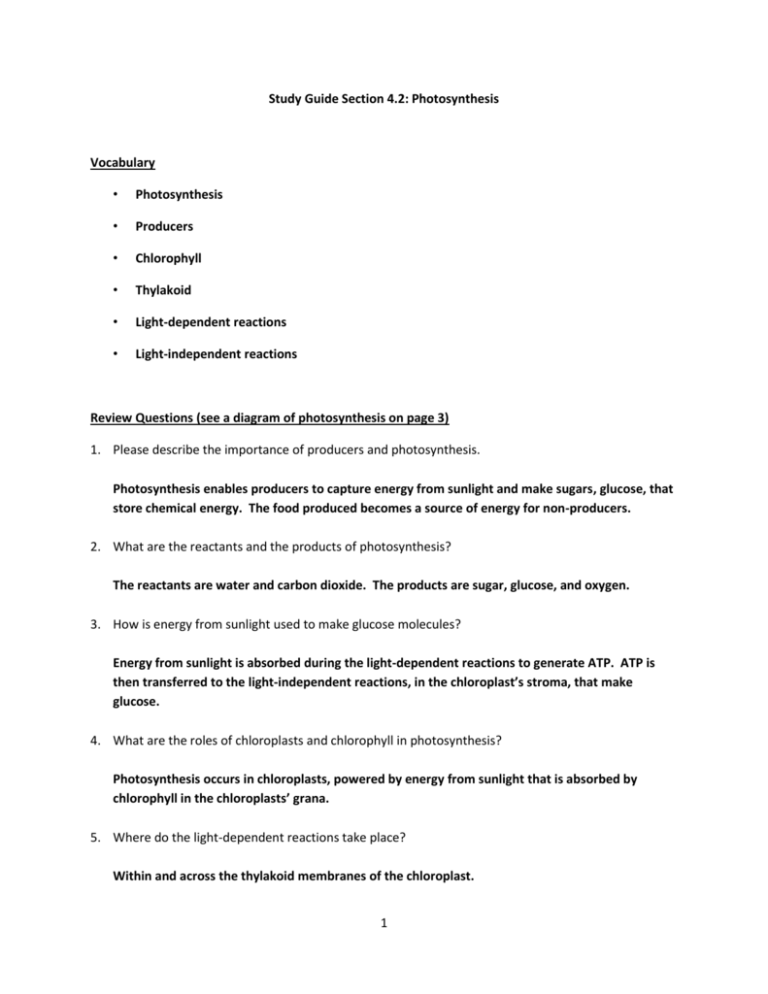
Study Guide Section 4.2: Photosynthesis Vocabulary • Photosynthesis • Producers • Chlorophyll • Thylakoid • Light-dependent reactions • Light-independent reactions Review Questions (see a diagram of photosynthesis on page 3) 1. Please describe the importance of producers and photosynthesis. Photosynthesis enables producers to capture energy from sunlight and make sugars, glucose, that store chemical energy. The food produced becomes a source of energy for non-producers. 2. What are the reactants and the products of photosynthesis? The reactants are water and carbon dioxide. The products are sugar, glucose, and oxygen. 3. How is energy from sunlight used to make glucose molecules? Energy from sunlight is absorbed during the light-dependent reactions to generate ATP. ATP is then transferred to the light-independent reactions, in the chloroplast’s stroma, that make glucose. 4. What are the roles of chloroplasts and chlorophyll in photosynthesis? Photosynthesis occurs in chloroplasts, powered by energy from sunlight that is absorbed by chlorophyll in the chloroplasts’ grana. 5. Where do the light-dependent reactions take place? Within and across the thylakoid membranes of the chloroplast. 1 6. What molecule, on which we animals all depend, is made during the light-dependent reactions? Oxygen 7. Where do the light-independent reactions take place? They take place in the stroma, fluid outside of the thylakoids, of the chloroplast. 8. Describe the stages of photosynthesis. Use the terms thylakoid, light-dependent reactions, and light-independent reactions in your answer. The first stage of photosynthesis is the light-dependent reactions that take place in the thylakoids. Energy is absorbed from sunlight and transferred through the thylakoid membrane. The energy is used in the light-independent reactions to produce sugars. 9. What reactant is needed in the light –independent reactions? Carbon dioxide 10. What wavelengths of light do chlorophyll a and chlorophyll b absorb? Chlorophyll absorbs light in the visible light spectrum other than green light. Chlorophyll preferentially absorbs red and blue light. 11. Suppose you wanted to develop a light to help increase plant growth. What characteristics should the light have? Why? The light should emit the optimal wavelengths in the visible light spectrum, such as blue and red, to be absorbed by the chlorophyll in the plants. 12. Explain why photosynthesis is important for building the structure of plant cells. In plants, the cell wall is responsible for structure and support. Cell walls are made from cellulose, which is a carbohydrate that is built from glucose produced during photosynthesis. 13. Overall, do you think photosynthesis is endothermic or exothermic? Explain your answer. Endothermic; it absorbs energy to produce glucose. 2 granum (stack of thylakoids) chloroplast 6H2O 6O2 thylakoid 6CO2 1 2 1 six-carbon sugar C6H12O6 3

